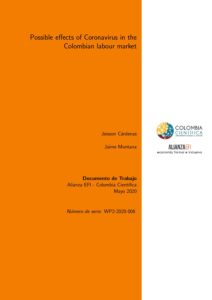The COVID-19 pandemic and its social distancing measures have brought unprecedented
socio-economic challenges worldwide. One of the most urgent questions is how
the labour force will be affected by the pandemic. The answer to this question will have
considerable impact on the countries’ productivity, poverty and unemployment rates,
etc. Consequently, the measurement of jobs which can be performed without increasing
the risk of contagion has become a priority. However, due to the lack of proper information,
less advanced countries such as Colombia (where unemployment and informality
rates are high – around 10.5% and 46.2%, respectively in 2019) face huge challenges
in making such estimations. Thus, we contribute to the debate by adapting different
international work-from-home and proximity measures and estimated the proportion of
workers in the corresponding groups according to the context of a developing country
such as Colombia. Our results suggest that a fifth of jobs in Colombia can potentially
be done from home. While around 10% of Colombian workers have a high degree of
physical interaction with other people.
Autores:
- Jaime Montana
- Jeisson Arley Cárdenas
Palabras clave:
- Coronavirus
- Demographics
- Households
- Occupations
Categorías:
- Proyecto 2
- Documentos de trabajo
